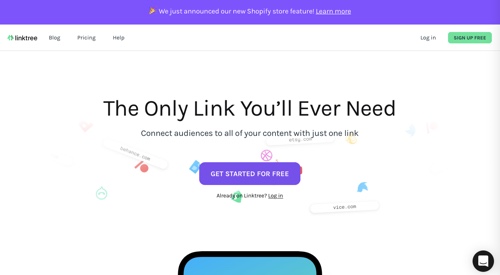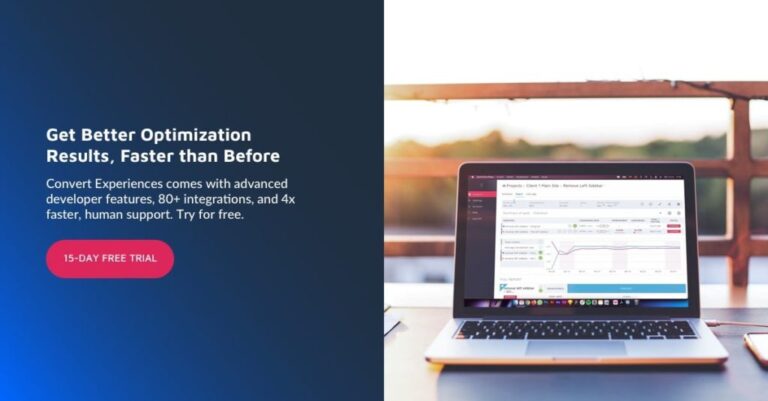“Optimizing too many variables in your DCO template will require more impressions to reach statistical significance, which can impact spend. We recommend being more selective and purposeful to optimize less variables to have more impact as a result from your tests.”
What is Dynamic Creative Optimization (DCO)?
We’re all familiar with the notion that we can only get out of something what we put into it. In order to realize the most impactful, ongoing performance growth, we have to begin with quality ingredients. This is just one reason why it’s not only important to have a variety of ads to test, but for each of those ads to be of equal overall quality – on-brand, polished, and crafted with specific variables in mind. This also means we can’t throw 50 different ‘recipes’ at the wall and see what sticks; in order to have the necessary insights to understand what performs best, we have to ensure high enough delivery of every possible ad for that data to have statistical significance.
Good marketers understand that while there is power in repetition, saying – or showing – the same thing in the same way does not earn interest. Dynamic creative optimization helps get your brand in front of customers intelligently, showing them what they want and need to see based on what they already know, helping improve brand safety.
How Does Dynamic Creative Optimization Work?
Before we dive into how the valuable optimization component of DCO works, let’s focus on the first 2 letters – dynamic creative. While dynamic creative is perhaps most often thought of in regard to retargeting, it can also be leveraged for prospecting.
Dynamic Creative for Prospecting
- Let’s assume you are an outdoor clothing retailer who wants to get the word out about a stylish new line of insulated jackets and coats
- You want your ad to serve in geos that are experiencing the first heavy snowfall of the season, where shoppers are more likely to be seeking out warmer clothes and accessories
- To add even more interest to the ads, you’d like them to include motion, with animated snowflakes ‘falling’ over the bold, bright imagery of your new lineup
- Additionally, you want the ads to include personalized feed-based creative, with images and corresponding messaging showcasing your latest blue and green men’s jackets to serve to male users, and your new line of purple and yellow women’s jackets for female users
This creative features a crisp, white background, eliminating the seasonal messaging shown in the first ad, and reducing the font size of SHOP NOW in the slightly larger button.
In retargeting, the optimization – or ‘O’ in DCO – comes fully into play. While your site’s DCO will be unique to your brand, goals, and KPIs, our refined process moves through 6 distinct steps for all campaigns:
DCO for Retargeting
With prioritized rules and logic baked into their DNA, optimized dynamic ads are wired to elegantly make associations between specific users and creative options to help you better understand your customers and their interest and intent, while ensuring they are delivered the right ad to answer for it in real time.
- Strategy
- Feeds Integration & Feed-Mapping Structure Development
- Build Dynamic Profile(s)
- Develop Creative
- Preview & QA
- Traffic & Publish
Walk, Don’t Run
At its heart, DCO is one of the most capable tools in your performance marketing arsenal for optimized, programmatically managed storytelling. Thanks to its data-backed – and data-packed – information library, it is able to make instantaneous decisions regarding which ad to show to a given user. Each ad is designed to be the next most logical step based on the available information, with optional multivariate testing eliminating the need for separate costly – and time-intensive – traditional A/B testing.
The below example looks at just one way dynamic creative can help brands target the right audience with relevant products in the prospecting stage: However, it is important to note that in the prospecting example above, the ads aren’t technically DCO as they are missing the optimization component. That said, once prospective customers are delivered the ads, they can be immediately moved into the appropriate retargeting group based on the actions they took, or didn’t take.
Which ad to serve is programmatically selected based on the relevant existing data regarding that user, whether it’s how many times they’ve already been exposed to a brand, or something more simple, like if it’s currently snowing where they live. As their name implies, dynamic ads are the opposite of static ads, and feature optimized creative that uses real-time data signals. These ads allow brands to get new, fresh, timely, and highly relevant messaging delivered quickly, without necessitating a full campaign overhaul. – Hiram Cruz, Director of Creative at Tinuiti
While your display campaign as a whole will always be crafted with carefully executed strategies at its core – strategies that work in harmony with other channels you’re running – DCO can be thought of as the tangible result of our ongoing testing efforts. In a sense, these are “living ads” that deliver the right message to the right audience at the right time – the new and improved that never stops getting newer and improving.
One way that is accomplished is through dynamic creative optimization. After all – if you keep presenting shoppers with the same exact step no matter how many times they’ve seen it, how far are they – or you – really going to get?
This creative employs the same colors, background, and messaging as the first example, but adjusts the layout of all those components for a different ad size.
Why is Dynamic Creative Optimization Important?
Now that we’ve covered the ins and outs of how DCO works, let’s look at a few examples of it in action with creative our team designed for Theory, a brand known for their contemporary, sophisticated men’s and women’s clothing and accessories.
This creative features a dark background, with accompanying text and seasonal messaging using white text, and a SHOP NOW button with a large font size.
Dynamic Creative Optimization Examples
Ready to learn more about how our talented, experienced Programmatic & Display Team can optimize your campaigns? Reach out today to chat with an expert.
This creative is similar to the second example above, but switches up the color contrast in the SHOP NOW button to white text on a black background as opposed to black text on a white background.
– Geoff Litwer, VP of Performance Display at Tinuiti In the words of Chinese philosopher Lao-Tzu, “A journey of a thousand miles begins with a single step.” To translate that idea to the world of performance marketing, it could be said that a shopper’s journey toward conversion begins with a single impression. So how can we make each step along that journey a building block on the one before it, guiding shoppers thoughtfully through personalized ad delivery that speaks to their precise location on the conversion path?
Both of these men’s Theory ads include the same image, background color, seasonal messaging, and white SHOP NOW buttons with black text, with the first ad giving more prominence to the image within, employing a slightly larger CTA button with smaller text. As is the common denominator in all marketing initiatives, DCO’s end goal is always conversion. We all understand there are myriad paths to conversion, and that learning from what has and hasn’t worked in the past is key to growth and progress. The beauty of dynamic ads is that by their very nature, they truly never stop learning, with the information they provide about your customers being both invaluable, and difficult to gain with such clarity, from many other channels.
Theory Pants and Blazers Dynamic Creative Optimization is a type of display technology that enables advertisers to create and serve dynamic ads personalized for the specific user seeing them based on available data about that user at the moment of ad serving. These ads can integrate and leverage 1st and 3rd party data, and are often served in consideration of where the user falls in the buyer journey at the time of ad delivery. They can also be served based on broader data triggers, such as gender, behavior, interests, intent, weather, location, and more.
Connected Storytelling “If I have to show someone the same banner ad three times in a row vs. telling a story with three different banners, then it’s going to negatively impact performance.” In this instance, the dynamic ads delivered consider where the user lives, their gender, and the weather they are experiencing. For the ad to be relevant and meet your targeting goals, you don’t have to know if they’ve seen your ad before, or if they would be a new or returning customer.
Thanks to the incredible flexibility and possibilities that DCO provides, many brands want to rush through the strategy stage and hit the ground running immediately. But DCO goes far beyond feed-based, and a well-executed strategy working in tandem with both existing and fresh, high-quality creative is imperative to lasting success.





